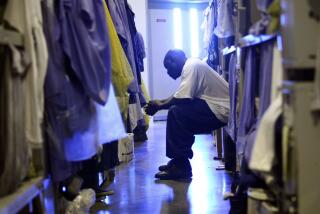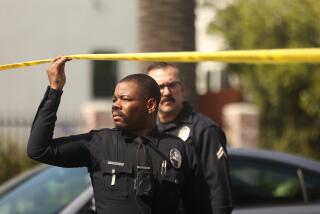Crime Against Teen-Agers Rising Rapidly : Violence: New report says 1 in 13 juveniles was a victim in 1992. Reno cites latest statistics in stressing the need to pass legislation.
- Share via
WASHINGTON — One in 13 juveniles was the victim of a violent crime in 1992, the Justice Department reported Sunday, confirming that violence against teen-agers is rapidly rising.
Based on its annual survey of households, the government concluded that crimes committed against young people had risen 23% since 1987. Overall, youths from 12 to 17 are five times more likely to be crime victims than adults older than 35, the report said.
The crime trend involving juveniles “is sharply up, and this is greatly troubling,” said John J. Wilson, acting administrator of the Office of Juvenile Justice and Delinquency Prevention.
The Bureau of Justice Statistics interviews members of selected households each year and uses the information to project annual trends in crime.
During 1992, it estimated that 6.6 million people were victims of violent crime, such as assault, robbery or rape. Of these, 1.55 million, or nearly one in four, were juveniles ages 12 to 17, the report said.
Simple assault in which weapons were not involved and injuries were not serious accounted for 56% of the crime reports for juveniles. About 27% of the crimes against juveniles involved aggravated assaults. The report did not include separate data on the most serious crimes, such as rape and murder, because the number of incidents reported was too small to make accurate projections.
Atty. Gen. Janet Reno said the rising tide of violence among young people offers “compelling proof that we must get the crime bill to President Clinton’s desk. The crime bill’s combination of policing, punishment and prevention will give us the tools we need to help reduce this grim toll.”
Meanwhile, the White House confirmed Sunday that it wants to drop from the pending crime bill a controversial provision that would allow defense lawyers to challenge the death penalty through the use of statistics on the race of those condemned.
Asked about the “racial justice” measure on NBC-TV’s “Meet the Press” on Sunday, White House Chief of Staff Leon E. Panetta replied: “First and foremost, we want a tough crime bill enacted. This is a good bill, and we ought not to let it go down” over an impasse regarding appeals in death penalty cases.
Senate Republicans have pledged to block passage of the crime bill if the provision is included.
GOP opponents of the measure have derided it as a “quota bill” for the death penalty and insisted that it would stop all executions.
Clinton strongly supports the crime bill, which would pay for 100,000 more police officers, ban some assault weapons, increase funding for prisons and provide employment and recreation programs for urban youths.
But he has been noticeably silent on the racial justice measure, which the House passed earlier this year.
Last week Panetta told leaders of the Congressional Black Caucus that the President wanted the provision dropped in order to save the crime bill.
Rep. Don Edwards (D-San Jose), prime sponsor of the racial justice measure, is reportedly seeking a modified version that would apply only to federal capital cases, a tiny segment of the overall death penalty system.
But Senate Minority Leader Bob Dole (R-Kan.) said Sunday that he doubted a compromise version could win passage.
More to Read
Sign up for Essential California
The most important California stories and recommendations in your inbox every morning.
You may occasionally receive promotional content from the Los Angeles Times.














